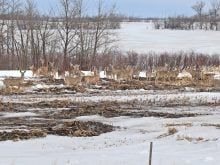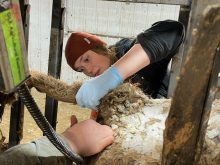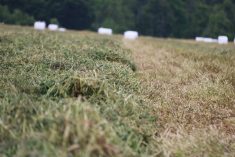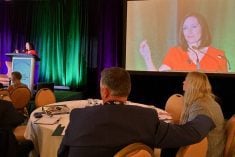HIGH RIVER, Alta. – Grant Hirsche admits he never planned to farm.
As he tramps through deep straw to inspect this spring’s crop of white-faced calves, he explains how his good intentions went astray. He took a summer job on a farm to earn some extra money for university and an upcoming marriage to Annette, a woman he met at a university in Utah, where he was earning a sociology degree.
But after finishing university, the couple returned to Alberta where Grant was hired by a Hereford breeder to work as a herdsman. And 20 years later they are still in the business.
Read Also
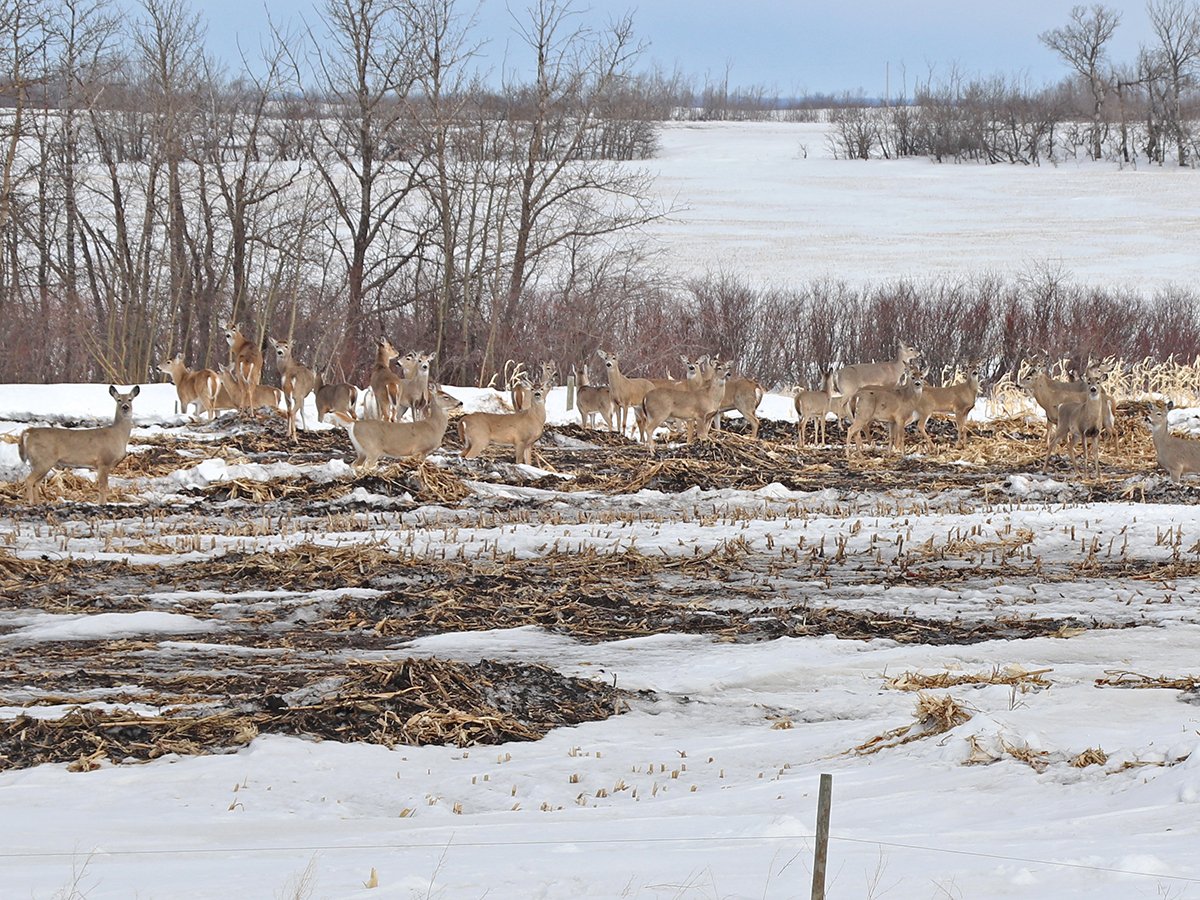
Foot-and-mouth disease planning must account for wildlife
Our country’s classification as FMD-free by the World Organization for Animal Health has significant and important implications for accessing foreign markets.
In fact, Hirsche Herefords has become an established name in international cattle circles and 1995 was a banner year.
Last November at the ranch’s annual production sale, they sold Canada’s high-selling bull calf, GH Simba ET 21E, for $92,000 to breeder Doug Fraser.
That calf went on to win grand champion Hereford bull at the Canadian Western Agribition in Regina and a reserve championship at the Denver National Western Stock Show in January.
Floyd Anderson of New Dayton, Alta., started the Hirsches off in the business. Although Grant was raised on a purebred Angus ranch in southern Alberta, he switched to Herefords when Anderson gave him some cows to raise.
Their first farm was at Fort Macleod in the southwestern corner of the province and three years ago they moved to High River where they bought a complete farm with buildings and a show and sale barn from a former Limousin breeder.
Born and raised in a city, Annette works alongside her husband and does her share of washing, clipping, brushing and shoveling manure at cattle shows.
They have four children between the ages of 15 and three. The oldest, Kimberley, a former Hereford queen and Brian, 13, are active 4-Hers who are used to winning with their Hereford calves. Karma and Kelsey are waiting their turn.
“Depending on their interest we give each kid a heifer at age six,” said Grant. Each child is expected to look after the animals and part of the money they earn is for a university fund.
Producers calling
The success of Simba, owned in partnership with Fraser, has made the Hirsches feel like they’ve arrived in the purebred business. The phones jangle every day with people looking for Simba semen and queries about the rest of their program.
Fraser, a 63-year-old Okotoks breeder, was involved in the oil patch for most of his working life and sees the younger man as a mentor.
“Grant is an original. He’s a natural salesman who doesn’t know how good he is at developing genetics and promotion,” said Fraser, who also owns the instrumentation and analysis firm, Galvanic Analytical Systems, which serves the oil patch.
Fraser and his wife Marge returned to his family’s farm in 1985 with eight registered Hereford cows purchased from the Hirsches.
Calving 54 cows this year, he ultimately wants to expand his herd up to 80 or 100 head and sees Grant as a good adviser.
While Simba’s success has been exciting for both families, the Hirsches are not one-hit wonders. The walls of their farm office are lined with champion banners, trophies and ribbons earned at Alberta’s major shows as well as Agribition.
Other animals raised at Hirsche Herefords have earned big money including Simba’s half-brother, Cosmo, who sold for $47,000 as a yearling and is now a three-year-old herd sire.
Their sales target is the yearling bull market. Young bulls are sold at the production sale in November, through private treaty and leasing agreements.
This year the Hirsches calved 200 cows and will register all the calves. It’s hard work involving the help of two hired hands. Besides natural breeding they run an extensive artificial insemination and embryo transplant program.
Sparked interest
The attention surrounding Simba has contributed to the resurgence of British breeds. With today’s emphasis on meat quality, there is renewed interest among cattle producers who want to infuse at least 50 percent British breeding in their programs to build up marbling levels and meat palatability.
That interest must be fed with promotion and marketing, a large aspect of any seed stock operation. Promotion includes opening the farm to visitors every day of the year.
This summer the Hirsches will host an international tour of breeders traveling to Canada from the World Hereford Congress being held in the U.S. They’ll be welcome.
“It’s a highlight when I can show people the cattle,” Grant said.



